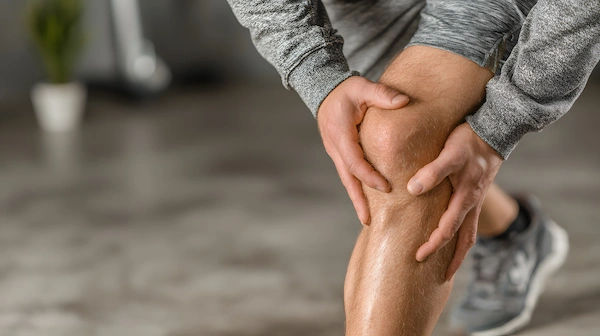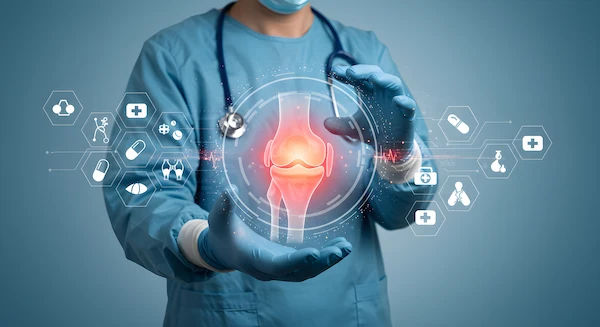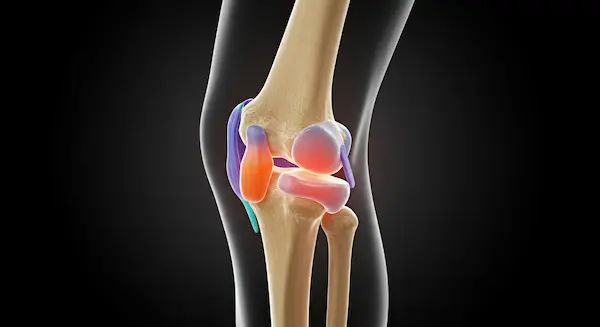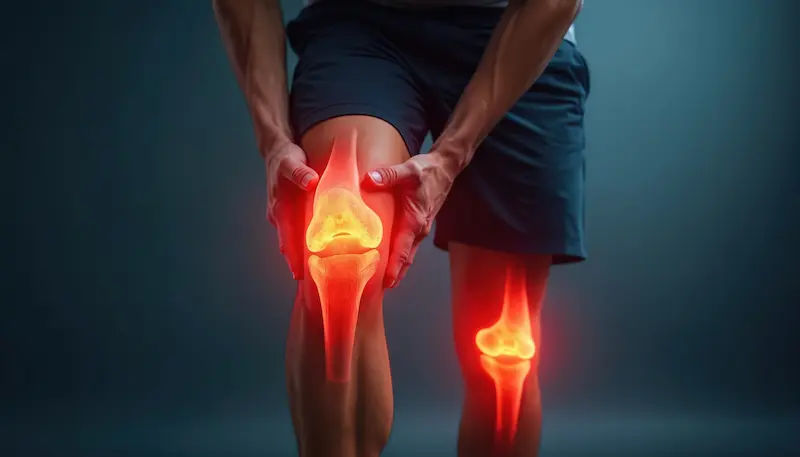What Leads to Joint Pain and Serious Complications?
Discover the causes of joint pain, from arthritis and injuries to infections, and learn how to prevent serious complications. Explore diagnosis, treatment, and lifestyle tips for joint health.

Written by Dr. Dhankecha Mayank Dineshbhai
Reviewed by Dr. Rohinipriyanka Pondugula MBBS
Last updated on 10th Sep, 2025
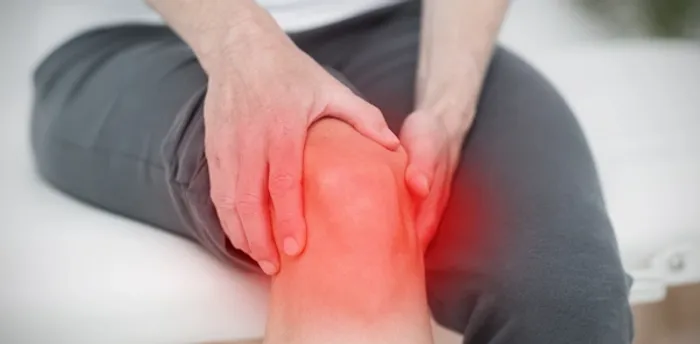
Introduction
Joint pain is an incredibly common complaint, affecting millions of people worldwide. It can range from a mild, nagging annoyance to a severe, debilitating force that disrupts every aspect of daily life. But what starts as occasional discomfort can sometimes spiral into something far more serious. Understanding the root causes of your joint pain is not just about finding relief—it's about preventing long-term damage and significant health complications. This article delves deep into the various factors that lead to joint pain, from common arthritis to traumatic injuries and systemic diseases. We'll explore how these conditions can progress if left unmanaged and what you can do to protect your joint health, maintain your mobility, and safeguard your overall well-being. If your joint pain is persistent, consulting a doctor online with Apollo24|7 can be a crucial first step toward an accurate diagnosis and effective treatment plan.
Understanding Joint Pain: More Than Just an Ache
A joint is where two bones meet, and it's designed to allow for smooth movement. This movement is facilitated by cartilage, synovial fluid, ligaments, and tendons. Pain arises when any of these structures are damaged or inflamed. It's important to distinguish between occasional soreness after activity and persistent pain that may indicate an underlying problem. Joint pain, or arthralgia, can be acute (short-term) or chronic (lasting more than three months). Chronic pain is often a sign of a condition that requires medical attention.
When is Joint Pain a Red Flag?
While not every twinge is a cause for alarm, certain symptoms warrant a prompt consultation with a healthcare professional. Be on the lookout for:
- Pain that persists for more than two weeks
- Severe, unexplained joint pain, especially with a fever
- Significant swelling, redness, warmth, or tenderness around the joint
- Inability to bear weight on the joint or use it normally
- Joint deformity
Consult a Specialist for Personalised Advice
The Primary Culprits: Common Causes of Joint Pain
Inflammatory Arthritis: When the Body Attacks Itself
This category involves conditions where the body's immune system mistakenly attacks its own joints, leading to inflammation, pain, and potential damage.
Rheumatoid Arthritis (RA)
- RA is a systemic autoimmune disorder primarily targeting the lining of the joints (the synovium). This leads to painful swelling, which can eventually result in bone erosion and joint deformity. It often affects joints symmetrically (e.g., both wrists at the same time).
Psoriatic Arthritis
- This form of arthritis occurs in some people with the skin condition psoriasis. It can cause swelling of entire fingers and toes (dactylitis), and may also affect the nails and other parts of the body.
Gout and Pseudogout
- These are caused by the deposition of crystal-like substances in the joint. Gout results from a buildup of uric acid, causing sudden, intense attacks of pain, often in the big toe. Pseudogout involves calcium pyrophosphate crystals and commonly affects the knees.
Degenerative Joint Disease: The Wear-and-Tear of Osteoarthritis
- Osteoarthritis (OA) is the most common form of arthritis. It's a degenerative process where the protective cartilage that cushions the ends of your bones wears down over time. This leads to pain, stiffness, and a loss of flexibility. Unlike inflammatory arthritis, OA is typically localized to the affected joint and is more common in older adults.
Joint Injuries and Post-Traumatic Complications
Sprains, strains, fractures, and dislocations can all cause acute joint pain. Even after the initial injury heals, it can lead to post-traumatic arthritis, a form of osteoarthritis that develops years later. The injury alters the mechanics of the joint, accelerating cartilage wear.
Infections: The Serious Threat of Septic Arthritis
- Bacteria, viruses, or fungi can invade a joint, causing a severe infection known as septic arthritis. This is a medical emergency characterised by intense pain, fever, and severe swelling. It can rapidly destroy cartilage and bone within the joint, leading to permanent damage if not treated immediately with antibiotics and drainage.
Other Underlying Health Conditions
- Sometimes, joint pain is a symptom of a broader systemic illness. Conditions like lupus, fibromyalgia, Lyme disease, and even certain cancers can manifest with significant joint pain as a primary feature.
From Discomfort to Disability: Potential Complications of Untreated Joint Pain
Ignoring persistent joint pain can have consequences far beyond the initial discomfort. The complications of chronic joint conditions can be severe and life-altering.
Chronic Pain and Reduced Mobility
- The most direct complication is the development of intractable chronic pain. This pain can make it difficult to walk, climb stairs, or perform basic tasks, leading to a sedentary lifestyle. This inactivity can then cause muscle weakening (atrophy) and further loss of function, creating a vicious cycle.
Joint Deformity and Permanent Damage
In conditions like RA, chronic inflammation can permanently damage cartilage and bone, leading to visible joint deformities (e.g., ulnar deviation in the hands). In severe OA, the complete loss of cartilage results in bone grinding on bone.
Systemic Spread and Organ Involvement
- Autoimmune forms of arthritis don't always stay confined to the joints. Rheumatoid arthritis, for instance, can increase the risk of cardiovascular disease, lung problems, and inflammation in the eyes and blood vessels.
The Mental and Emotional Toll
- Living with constant pain and physical limitation takes a profound psychological toll. It's strongly linked to an increased risk of depression, anxiety, sleep disturbances, and feelings of social isolation, significantly impacting one's overall quality of life.
Diagnosis: Finding the Root of the Problem
Because the causes are varied, diagnosis involves a multi-pronged approach. A doctor will typically conduct a physical exam, assess your medical history, and may order tests. These can include blood tests (to check for inflammation markers and autoimmune antibodies), imaging like X-rays or MRIs to visualise bone and soft tissue damage, and sometimes joint fluid analysis to check for infection or crystals. Apollo24|7 offers convenient home collection for key blood tests like ESR and CRP, which are crucial markers for inflammation.
Managing Joint Pain and Preventing Complications
Early and proactive management is key to controlling pain and preventing long-term complications.
Medical Treatments and Interventions
Treatment is cause-specific. It may include:
- Medications: NSAIDs for pain and inflammation, DMARDs (Disease-Modifying Antirheumatic Drugs) for autoimmune arthritis, corticosteroids for acute flares, and biologics that target specific parts of the immune system
- Physical Therapy: Essential for improving range of motion, strengthening supporting muscles, and learning to move in ways that reduce stress on joints
- Injections: Cortisone shots can provide temporary relief, and hyaluronic acid injections can lubricate osteoarthritic knees
- Surgery: In cases of severe damage, procedures like arthroscopy, joint fusion, or total joint replacement may be necessary
Lifestyle and Home Remedies for Relief
- Weight Management: Every pound lost reduces four pounds of pressure on the knees
- Exercise: Low-impact activities like swimming, cycling, and walking keep joints mobile without excessive stress
- Heat and Cold Therapy: Heat can relax muscles and ease stiffness; ice can reduce inflammation and numb sharp pain
- Anti-Inflammatory Diet: A diet rich in omega-3 fatty acids (fish), antioxidants (berries, leafy greens), and spices like turmeric can help manage inflammation
Conclusion
Joint pain is a signal from your body that something is wrong. While it might be a temporary issue, it can also be the first sign of a serious condition that, left unchecked, can lead to chronic pain, permanent joint damage, and a diminished quality of life. The path from discomfort to complication is not inevitable. By understanding the potential causes, recognising the warning signs, and seeking timely medical advice, you can take control of your joint health. Effective management strategies, from advanced medications to simple lifestyle adjustments, can help you reduce pain, maintain mobility, and live a full, active life. If your condition does not improve after trying conservative methods, book a physical visit to a doctor with Apollo24|7 for a comprehensive evaluation and personalised treatment plan.
Consult a Specialist for Personalised Advice
Consult a Specialist for Personalised Advice

Dr. Mainak Baksi
General Practitioner
13 Years • MBBS , MD (MPH)
Howrah
Mainak Baksi Clinic, Howrah
(50+ Patients)

Dr Suseela
General Physician
5 Years • MBBS
Bengaluru
Apollo Medical Center, Marathahalli, Bengaluru

Dr. Rajib Ghose
General Physician/ Internal Medicine Specialist
25 Years • MBBS
East Midnapore
VIVEKANANDA SEBA SADAN, East Midnapore

Dr. Suvadeep Sen
Critical Care Specialist
12 Years • MBBS, MD, FNB (CRITICAL CARE MEDICINE), EDIC
Mumbai
Apollo Hospitals CBD Belapur, Mumbai

Dr. Arif Ahmed
General Physician/ Internal Medicine Specialist
9 Years • MBBS, MD (Genl. Med.)
Kolkata
MCR SUPER SPECIALITY POLY CLINIC & PATHOLOGY, Kolkata
Consult a Specialist for Personalised Advice

Dr. Mainak Baksi
General Practitioner
13 Years • MBBS , MD (MPH)
Howrah
Mainak Baksi Clinic, Howrah
(50+ Patients)

Dr Suseela
General Physician
5 Years • MBBS
Bengaluru
Apollo Medical Center, Marathahalli, Bengaluru

Dr. Rajib Ghose
General Physician/ Internal Medicine Specialist
25 Years • MBBS
East Midnapore
VIVEKANANDA SEBA SADAN, East Midnapore

Dr. Suvadeep Sen
Critical Care Specialist
12 Years • MBBS, MD, FNB (CRITICAL CARE MEDICINE), EDIC
Mumbai
Apollo Hospitals CBD Belapur, Mumbai

Dr. Arif Ahmed
General Physician/ Internal Medicine Specialist
9 Years • MBBS, MD (Genl. Med.)
Kolkata
MCR SUPER SPECIALITY POLY CLINIC & PATHOLOGY, Kolkata
More articles from Joint Pain
Frequently Asked Questions
What's the main difference between osteoarthritis and rheumatoid arthritis?
Osteoarthritis is a 'wear-and-tear' degenerative disease where cartilage breaks down. Rheumatoid arthritis is an autoimmune disease where the body's immune system attacks the joints, causing inflammation. OA is typically asymmetric and worsens with activity, while RA is often symmetric and may cause morning stiffness that lasts over an hour.
Can the weather really make my joint pain worse?
Many people report increased joint pain with changes in barometric pressure, often before rain or cold weather. One theory is that lower pressure allows tissues to expand, putting pressure on nerves in already-sensitive joints.
What are the worst foods for inflammatory joint pain?
Foods that can promote inflammation include highly processed foods, sugary drinks, refined carbohydrates (white bread, pastries), red meat, and fried foods. Reducing these can help manage conditions like rheumatoid arthritis.
Is cracking my knuckles bad for my joints?
Generally, no. The popping sound is caused by bubbles bursting in the synovial fluid. Studies have not found a direct link between knuckle cracking and osteoarthritis. However, if it causes pain or swelling, it's best to stop.
When is joint pain considered an emergency?
Seek immediate medical care if joint pain is sudden and severe, is accompanied by a high fever, or if the joint appears deformed, is unbearably tender to touch, or you cannot use it at all. These could be signs of a fracture, dislocation, or a serious infection like septic arthritis.
